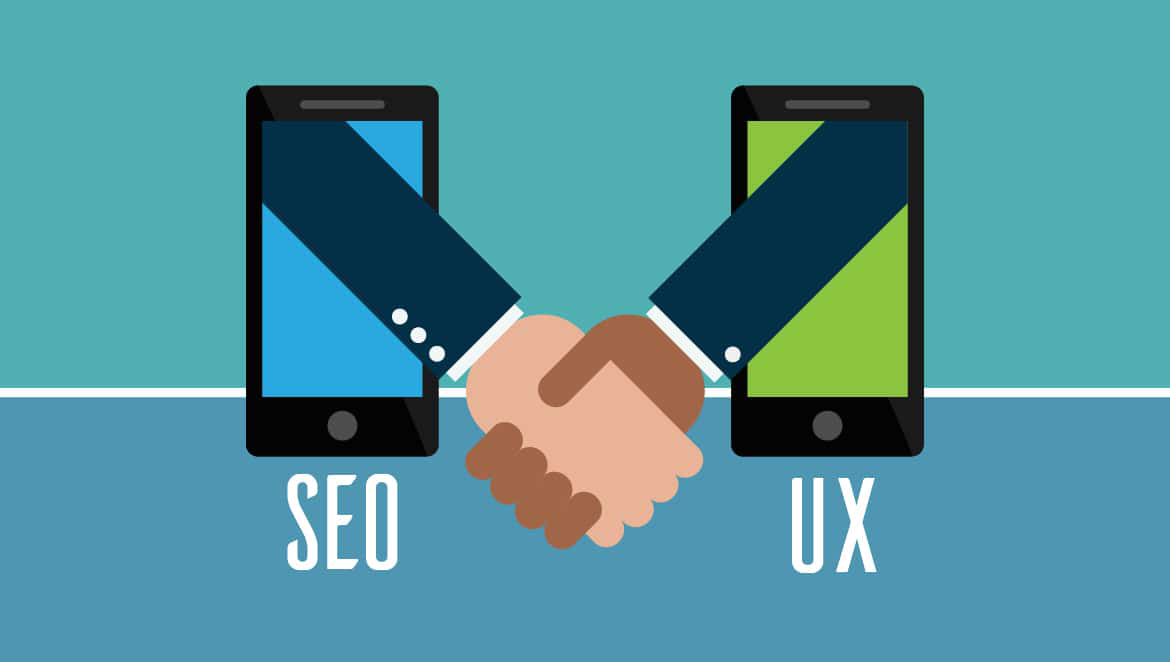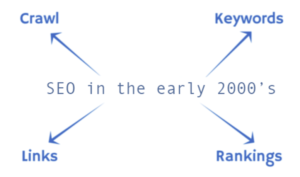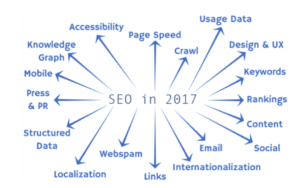SEO and UX go hand in hand

SEO optimisation has changed a lot the past few years. It has become much more than just optimising your page titles. It’s also about site speed and user experience (UX), and great content is obviously a huge part of it. In a holistic approach, SEO has a lot of “teammates” that have to work together. SEO in this day and age cannot live in its own silo anymore because we now know how much it is impacted, both directly and indirectly, by other marketing channels, such as social media, PR, offline marketing, and even email marketing. Some of these signals include brand mentions, citations, search relevancy, usage data, content and links.
In this article, you’ll find a number of areas where SEO and UX meet. Come to think of it, in a lot of ways, SEO simply targets the search engines and UX targets the visitor, both with a shared goal: to provide the best experience possible.
Page elements that influence both SEO and UX


Page titles and (sub)headings
An optimized page title and related, visible <h1> element will tell Google what your page is about. That page title also informs the visitor what that page is about, already on Google’s result page. Subheadings like <h2> help both Google and your visitors to scan a page and grasp the general idea of that page.
External links
An external link in your content tells Google that you respect your sources. It can also increase the odds that your sources will link back to you in their content. For your users, external links will provide a way to access background information, for instance.
Great content
If you provide quality content, people want to link to you, read your content and stay on your pages to finish reading. These incoming links and the time-on-page is something Google will notice. Google could start to consider your content as the main source of information on a certain topic. Images and videos create rich content, which both Google and your users enjoy. All in all, it’s clear that there are many areas where SEO and UX meet, right there on your pages.
Site structure
When a visitor lands on one of your pages, you want to make sure they know where they are on your website. It should be clear to them that there’s more to explore on your site. If you initially fail to answer the user’s question in Google, at least be so polite as to direct them to it. You want to prevent that click back to the search result pages. That click back to the search result pages is called a bounce. And a high bounce rate can have a negative influence on your SEO. It indicates to Google that you may not be answering your visitors’ search query.
One way to prevent a bounce is to make sure your site structure is clearly reflected on your page. You can do that by using breadcrumbs, reflecting your menu or refer to related content or products.
By building a nice, hierarchical site structure, you make sure that Google can efficiently crawl your pages and visitors can easily find what they are looking for. SEO and UX are naturally influenced by this.
Site speed & mobile experience
Since the use of mobile devices site speed has becoming more important than before. Nowadays 53% of all visitors leave a site that fails to load in 3 seconds or less. This is one of the reasons why UX is so important. A website that has a good site speed will be seen as an enjoyable website to read and navigate.
If your pages aren’t optimized for smartphones, they won’t rank in mobile search at all. With over half of Google queries coming from mobile devices, that’s not something you can put up with. The focus on mobile will likely continue with Google’s commitment to switch to mobile-first indexing soon.
That doesn’t involve cramming everything you have into your website menu. But it could mean that you have to evaluate your mobile homepage. Does it cover the main areas of your website, for your user? Does it set a mood and lure or invite your visitors, and any search engine, into the rest of the website as well? Even button sizes on your mobile website could be of influence here.
Conclusion: SEO and UX go hand in hand
As you can see, there are many areas where SEO and UX meet. When you keep in mind that Google is becoming more and more human, or at least mimics human behavior more accurately, it’s only logical to see all the overlap SEO and UX have, right?
It’s fair to say that almost all optimisation you do for your users (UX) has a positive effect on your SEO. This applies the other way around as well: if you deliver a poor user experience, you might see this reflected in the search result pages! Obviously, the impact of that effect may differ from optimisation to optimisation. But SEO and UX are clearly a great match in our larger concept of holistic SEO!
Wanna know how your digital
transformation could look like?
What we do
Digital Marketing
Digital Transformation
Google optimisation
Webdesign
Video & animation
Consultancy
Lead generation

Italian Headquarter
Via Marconi 2
38121 Trento
Italy
+39 388 65 88 206
info[at]dammid.eu

Belgian Headquarters
Recollettenstraat 13
8620 Nieuwpoort
Belgium
+32 472 82 12 69
info[at]dammid.eu
